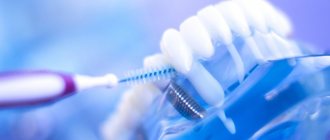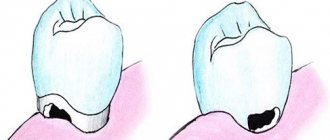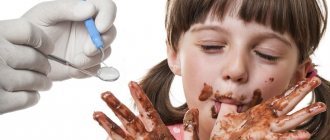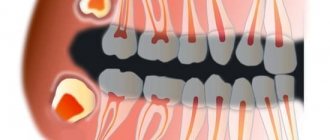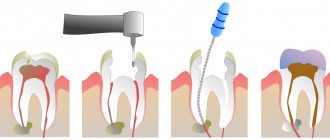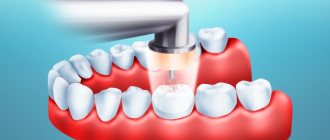Dental treatment without drilling.
SUPER NEW 2022!
Without drilling or enamel trauma, we treat:
- superficial and medium dental caries
- wedge-shaped tooth defect
- cervical dental caries
We have been using various non-drilling dental treatment techniques since 2006;
In this article, we will help you figure out which one is the best.
Some patients' fear of having their teeth drilled is forcing dentists and medical research centers to look for new treatment options.
An American study involving more than 10,000 patients suffering from dental phobia showed that patients are more afraid of the procedure of drilling teeth with a drill.
Often patients cannot explain what exactly about drilling scares them.
There are 4 methods in the arsenal of modern methods of dental treatment without drilling. They all have their advantages and disadvantages. In this article we will look at each and choose the best.
Complications after treatment
If the dentist overheats the dentin or injures the pulp during preparation, the tooth will begin to ache after the anesthesia wears off. We'll have to re-open it and depulp it. A lump may appear on the gum after unsuccessful canal sealing if the material penetrates beyond the root. Then you need to re-open the canal, treat the inflammation, then fill it again.
If the filling is in the way, it means that the dentist did not sharpen or polish it properly. This can be easily fixed. The appearance of a reaction to thermal changes indicates a violation of the tightness of the seal. All these complications often arise due to the fault of the dentist. To prevent them, you should carefully choose a clinic and trust only doctors with extensive experience.
General benefits of dental treatment without drilling
- There is no sound of an unpleasantly buzzing drill.
- There is no direct contact of the cutting instrument with tooth tissue, which makes infection with HIV and hepatitis B and C impossible.
- The procedure is painless when treating shallow caries, which allows you to treat teeth without anesthesia.
- Finding the patient in a comfortable psychological atmosphere, no expectation of pain.
- No drill vibration and no likelihood of microcracks and enamel chips.
Let's consider several modern methods of treating caries without drilling :
Rules for the treatment of baby teeth
- Anesthesia takes place in 2 stages. This is necessary so that the baby does not feel anything and is not afraid. First, a gel or spray and lidocaine are applied to the gums. Only then is the injection given. For this, the finest needles are used.
- Tissues affected by caries are carefully removed using a special hand tool.
- A safe concentration of anesthetic in the drug is maintained. For Lidocaine it is 2%, for Articaine – 4%. The amount of the drug is selected depending on the weight of the child. Apply from ½ to 1/6 of the standard adult dose. Anesthetics containing adrenaline should not be used for children under 4 years of age.
- Treatment of caries is carried out in sessions. Each should last no more than 30 minutes. Otherwise, the baby will get tired and become capricious.
- Filling materials are used that can be applied in one go. They contain fluoride and other minerals to strengthen teeth.
“Permanent 6th teeth erupt in children aged 5-6 years and, as a rule, are affected by caries first. Teach children how to use toothbrushes and toothpastes correctly, which will prevent plaque from accumulating in deep fissures.”
Rita Martikovna Meliksetyan, Dentist therapist, orthodontist, pediatric dentist, 19 years of work experience
METHOD 1: ICON infiltration method of dental treatment
The Icon procedure technique is based on the infiltration of tooth tissue with a polymer composition after the disinfection procedure.
The developers of the methodology are the DMG concern (Germany).
ICON is a gentle treatment method that involves the introduction (infiltration) of a polymer resin into the affected area of the enamel surface. The principle of operation of the described technique is based on the action of a special organic substance, with the help of which the part of tooth enamel affected by caries is treated. A carious stain on the surface of a tooth is covered with a composition (containing acid), as a result of which the enamel damaged by the carious process splits and becomes permeable. At the end of the process of creating enamel permeability, the acid gel is washed off from the tooth. The area of enamel affected by caries is dried. An organic polymer resin consisting of organic components is applied to the tooth. This composition fills the pores of tooth enamel formed as a result of etching and forms a monolithic structure. After the enamel is impregnated with resin, it is polymerized under the influence of a dental photopolymer lamp with halogen radiation. The resin hardens to form a protective layer on the enamel.
The technique allows you to preserve the strength of the enamel for a period of about 5 years. The material used to fill the enamel defect does not cause an allergic reaction and is biocompatible. Thanks to this polymer layer, cracks do not form on the surface of the tooth enamel for a long time, allowing pathogenic microorganisms to penetrate the surface layers of the enamel and contribute to the development of the carious process. The polymer resin has several shades, which allows you to choose a shade that fully matches the natural color of the tooth surface. On average, the ICON procedure takes about half an hour. Without any unpleasant sensations or discomfort, the superficial area affected by caries is completely eliminated.
Stages of traditional caries treatment (using a drill)
- Anesthesia completely removes pain. At DHC, local anesthesia is performed with new generation drugs based on Articaine. The injections are completely safe, hypoallergenic, and have no restrictions or side effects.
- Tooth preparation - excision of carious tissues with a drill. It is necessary to remove all affected tissue, otherwise the infection will recur.
- Creation of a cavity with burs of different sizes with cooling so as not to overheat the pulp and dentin. Inside, the cavity is treated with etching gel to improve adhesion to the filling.
- Installation of a gasket - made on the basis of calcium hydroxide, normalizes blood circulation in the pulp, accelerates dentin regeneration. Spacers are needed when the cavity wall is located next to the pulp.
- Filling with photopolymer materials. Such fillings are durable, similar in color to enamel, and can withstand any load.
- Grinding - adjusting the filling height so that it does not interfere with the closure of the teeth and does not disturb the bite.
Indications for use of ICON dental treatment:
- Removal of caries in the white spot stage on the enamel after removal of the braces system. While wearing orthodontic equipment in the area around braces with poor oral hygiene, tooth enamel may undergo a carious process. Impregnation of the damaged structure of areas of enamel with ICON polymer resin can restore these enamel defects without intervention using a drill. The carious process in the initial stage is localized only in the enamel and the infiltration technique makes it possible to eliminate it.
- Treatment of children. If a child of conscious age behaves calmly in the dental chair, but experiences fear and does not allow the doctor to use a drill or turbine.
This technology is popular among patients. However, the procedure has very limited indications - caries in the stage of chalky destruction of the enamel. Few people notice caries at this stage of development and turn to a dentist for help.
Treatment methods for caries that will stop its development
It is impossible to get rid of caries without visiting a dentist.
Therefore, it is very important to visit a doctor for regular preventive examinations, as well as every time you experience increased tooth sensitivity or pain. Modern dentists have in their arsenal a variety of methods for treating caries, from classic filling to laser or ozone.
So, methods of treating caries:
Sealing
The classic and most common way to treat caries is to remove the affected tooth tissue using a drill and fill the resulting cavity. In case of deep lesions, careful elaboration of the canals is necessary; sometimes it may be necessary to install a pin or a special inlay to strengthen the filling.
Anesthesia for the treatment of caries depends on the extent of the pathological process and the number of affected teeth. Teeth can be treated after injecting an anesthetic into the gums or under general anesthesia.
Dental treatment with a drill is carried out in several stages:
- Ideally, the oral cavity is prepared for the procedure with professional cleaning, during which plaque and tartar are removed.
- Before treatment, the doctor, if necessary, administers anesthesia
- Then they move on to cleansing the carious cavity: they remove damaged tissue from it and treat it with special solutions that prevent the growth of bacteria under the filling.
- After this, a cavity of a certain shape is formed so that the filling does not fall out later. Modern filling material has a special composition that allows it to “bond” with tooth tissues also chemically.
- In cases of deep caries, it may be necessary to install a pin or a special inlay.
- Then comes the filling stage. The dentist selects the color of the filling material, isolates the diseased tooth using a special device - a rubber dam, and applies the composite layer by layer.
- Finally, the filling is adjusted according to the bite. To do this, the patient is given a special copy paper to “chew” so that it is imprinted on the protruding areas of the tooth. If they are not corrected, the patient will experience discomfort and pain when chewing. Therefore, the doctor grinds and polishes, removing protrusions and burrs on the filling.
ICON
This technique is one of the most promising methods for treating superficial caries. This technique can also be used in patients who wore braces and have areas of demineralization after their removal.
During the procedure, tooth tissue is impregnated with a special composition that prevents the spread of bacteria and their metabolic products. In this way, the infection is “preserved.”
However, such treatment is only possible at the initial stage, so it is important to visit the dentist regularly, once every 3-6 months, for a routine examination.
Treatment using the ICON method allows you to treat both open and hard-to-reach areas of the teeth and is carried out in three stages:
- First, the doctor treats the affected tissue with a special gel.
- Then an infiltrate is applied, which preserves the infection. After this, it can no longer spread either to this tooth or to neighboring ones.
- Finally, the dentist performs polishing
ART
ART therapy is a non-invasive method of treating caries. The dentist uses excavators - special tools with which he scrapes off damaged tissue. After cleaning the carious cavity, filling is carried out using special glass ionomer cement. This technique is not particularly effective, since it is quite difficult to thoroughly clean the tooth from damaged tissues manually. This can cause secondary caries.
Ozone therapy
Ozone has a bactericidal effect, which makes it possible to treat caries without the help of a drill, anesthesia or filling. Therefore, the procedure is carried out without discomfort and pain. With the help of a special drug, oxygen is converted into ozone and sent to damaged tissues. It removes bacteria without affecting the healthy part of the tooth. After this, the dentist carries out remineralization using a special composition. Ozone therapy is used to treat superficial caries in the spot stage.
Air abrasive method
With this type of treatment, the carious area is treated with sandblasting machines. Using a stream of air that contains special impurities, the dentist “knocks out” the affected tissues without injuring healthy ones. This is a painless, safe and, most importantly, effective way to combat caries. The impact on the enamel occurs pulsed, in microsessions of 5-10 seconds. One of the negative aspects is the likelihood of increased sensitivity of the enamel after treatment. The air-abrasive method cannot be used in hard-to-reach places that the tip of the device cannot reach.
Infiltration
The treatment is based on chemical-mechanical treatment of dental tissue without the use of boron. As a rule, it is used to eliminate initial caries. A special gel is applied to the damaged area, after splitting the carious tissues, the area is dried and treated with a polymer resin.
Laser treatment
The laser removes carious areas, disinfecting healthy tissue around. This treatment option is especially suitable for children and pregnant women who find it difficult to dissect with a drill. Laser treatment requires special equipment and highly qualified specialists; the cost of such a procedure is quite high.
Silvering
Silvering of teeth is a special method of treating caries, which is based on treating the affected tooth tissues with a special composition based on silver nitrate. This treatment is used to treat baby teeth in children at the initial stage of the pathological process.
After silvering, the teeth become black, which does not look very aesthetically pleasing. However, silver nitrate inhibits the development of caries and its spread to neighboring teeth.
The procedure is quick and painless: using a cotton swab soaked in a solution, the dentist applies silver nitrate to the damaged area of the tooth. After treatment, it is very important to carefully maintain oral hygiene: brush your teeth twice a day and rinse your mouth after every meal.
Children tolerate silvering easily, but dentists recommend it only if the child refuses to have their teeth treated with classic fillings.
It is recommended to repeat silvering six months after the procedure.
This treatment option has its disadvantages, in addition to the aesthetic defect. These include the ineffectiveness of silvering for chewing teeth and the lack of effect for deep caries.
Deep fluoridation or remineralization
With this therapy, the dentist treats the affected tooth tissue with fluoride-containing preparations. The procedure is absolutely painless, and does not cause an aesthetic defect in the form of dark staining, as with silver plating.
This treatment is effective at the “white spot” stage. This is why it is very important to visit the dentist regularly to monitor the condition of your teeth. In children with a tendency to caries, this should be done at least once every 3 months.
METHOD 2: Eliminating caries without a drill using ozone therapy
Elimination of the carious process in the first stages, when the process has not yet developed to the point of a tooth enamel defect in the form of a cavity, but a non-pigmented carious spot has formed - this is possible with the help of an innovative device - the ozone generator Heal Ozone (KAVO) Germany. In this situation, it is possible to avoid drilling and traumatizing the enamel, and it is also possible to keep the tooth structure intact if it is necessary to eliminate the initial dental caries, the beginning process of “rotting” in the grooves of the tooth, and the carious process of the frontal parts of the teeth in the stage of demineralization.
Today this is a method recognized in the global dental community.
A special gaseous chemical substance, built on the basis of oxygen and having the ability to quickly disintegrate, is called ozone. Consisting of 3 oxygen molecules, this gas, when applied to it by physical factors that change the structure of the molecule (light wave, electric discharge), degrades into two chemical particles, one of which is a super active oxygen particle. The atomic oxygen molecule easily interacts with and reacts with any chemical. elements, turning them into oxides and changing their chemical properties. When interacting with substances that are part of the cell membrane of a pathogenic microorganism or virus, their death is caused. The highly active oxygen atoms released as a result of the reaction are destructive for pathogenic microorganisms. Consequently, during the action of ozone on the tooth, microorganisms that cause caries are destroyed.
The technique was first used by doctors from Germany and is highly effective.
Ozone is supplied to the demineralized area of the tooth through a specially designed nozzle. The procedure is not accompanied by sound, smell and is completely painless. Clearly measured portions of gas are supplied through the tube from the ozone generator. Negative pressure is created around the area of damaged enamel, as a result of which the nozzle of the device fits tightly to the tooth, creating a rarefied atmosphere. In 15-45 seconds, the active gas disinfects and sterilizes hard enamel tissue, killing pathogenic microorganisms that cause caries. To achieve a therapeutic effect, you should treat the tooth only once, and then carry out at least 1 procedure every six months. The ozone therapy procedure is followed by a special treatment of the tooth enamel: dentists apply a patented HealOzone liquid to the surface of the tooth, which causes mineralization (strengthening) of the tooth.
The liquid does not cause irritation to the soft tissues of the tooth and is safe for patients of any age. Patients are recommended to use the liquids from the HealOzone kit at home every day for 5 weeks, providing a long-term reliable supply of mineral components to strengthen tooth enamel.
- Removal of the carious process in the stage of white spot and surface demineralization of the tooth.
- Elimination of the carious process in a groove or blind fossa within the enamel at a stage when the cavity has not yet formed.
The ozone therapy procedure is indicated for use and gives maximum effect in cases where the dentist discovered tooth decay from the very beginning and it did not have time to form a cavity.
How is caries of permanent teeth treated in children?
Caries on permanent teeth is treated as in adults. The main method is filling. Photocomposites are the most successful for sealing the affected cavity. These are materials that do not differ in color or texture from teeth. Filling takes place in several stages:
- Introduction of anesthesia.
- Removing dead tissue using a drill and cleaning the cavity.
- Rinsing the tooth with an antiseptic.
- Air drying.
- Application of phosphate cement insulating gasket.
- Filling with composite materials in several layers, each of which must be dried with a special lamp.
For shallow caries, infiltration, remineralization or ozone therapy can be used. Silver plating is contraindicated.
METHOD 3: Laser treatment of dental caries (Laser treatment of caries)
This treatment uses laser radiation. Modern dentists have several laser systems in their arsenal. They differ in the source of laser radiation.
A laser beam directed at the tooth will evaporate the areas affected by the carious process.
The procedure is based on the principle of selective photothermolysis: the laser unit is configured in such a way that it burns only dark areas of the enamel and dentin of the tooth, which are pigmented as a result of caries damage.
Healthy tissues do not have a brown color and are therefore not affected.
Simultaneously with the evaporation of the affected area of the tooth tissue, laser radiation stops the growth and reproduction of pathogenic microflora on the carious tooth. The technique is completely non-contact, as a result of which infection of the patient with diseases such as HIV and Hepatitis B and C is excluded.
However, the use of laser techniques is limited by the cost of the laser unit (10-12 million rubles) and the possibility of overheating of tooth tissues with the occurrence of pulpitis.
The technique requires anesthesia before laser treatment of the tooth.
Features of pediatric dentistry
Caries in baby teeth develops rapidly, so you need to visit the dentist at least once every six months, and preferably every three months. If the pathological process is started, pulpitis, periodontitis and other diseases may develop. If the pulp is damaged, treatment is delayed for three visits to the doctor. At the first stage, the dentist makes a diagnosis, opens the dental unit, places medicine inside, at the next stage, he removes the coronal pulp, and injects the medicine into the root part. Finally, a complete cleaning and filling is performed.
Pediatric dentists must have a thorough understanding of the psychology of children, as this is a complex group of patients. They often experience great fear, do not agree to procedures, and cannot sit still for a long time. If a child is scared and does not contact the doctor, then any procedure becomes a serious problem.
Maintaining the health of the dental system must be comprehensive. Young patients need to make an appointment not only with a therapist, but also with an orthodontist who deals with various developmental anomalies.
METHOD 4: SANDMAN air-abrasive dental treatment system
The kinematic system for treating teeth using an air-abrasive method with the SANDMAN system is recognized as the best method for treating teeth without drilling .
It is this technique that the specialists of the Bionic Dentis clinic use in their practice.
This method is based on the fact that a stream of air containing particles of aluminum oxide of a certain caliber acts on the tooth. These particles have such an energy of impact on the tooth tissue that it cleans out the tooth tissue affected by the carious process, but does not injure healthy tooth tissue at all.
Another advantage of the air-abrasive method of tooth preparation without drilling is that there is no need to treat the tooth with acid before installing a light filling.
Diagnostics
In our clinic, caries diagnosis begins with an examination. The dentist carefully examines each tooth from the outside and inside, lightly tapping it (percussion). If a source of infection is detected, thermometry is performed - exposing the tooth to cold to assess the reaction. Electroodontometry helps determine the degree of infection development - the impact of a microcurrent on the tooth, to which the inflamed pulp will react. Patients are prescribed x-rays to assess the condition of the root tissues and detect hidden cavities.
Indications for dental treatment without drilling
- Average caries.
- Superficial caries.
- Caries of contact surfaces of teeth.
- Wedge-shaped tooth defect.
- Caries in the chalky spot stage.
- Caries after braces.
- Caries in the pigmented spot stage.
- Fluorosis in the spot stage
- Enamel erosion
The indications for this method cover all diseases of the hard tissues of the tooth, so the system is considered universal and the best of all treatment methods without a drill.
Indications and contraindications for caries treatment using Icon technology
The infiltrating substance has an effective effect on molars and baby teeth. Experts recommend the painless Icon method for the treatment of caries in children
.
Other indications for treatment:
1. Initial caries. Treatment
on proximal surfaces.
2. On the vestibular surfaces.
Contraindications:
- large depth of carious lesions;
- enamel defects caused by erosion, trauma, hypoplasia and other pathologies;
- individual intolerance to the infiltrating substance.
The technique is not used in the treatment of caries on the tooth root and exposed dentin.
Treatment of a wedge-shaped tooth defect with the SANDMAN system is considered the ideal method of choice
After removing the carious process, the tooth cavity is disinfected with a laser. The dentist begins to restore the lost tissue with light material. With this technique, it is almost impossible to distinguish a filling on a tooth from its own tissues. What makes this technique the most aesthetic of its analogues.
The service life of light fillings with this method of processing hard tissues is more than 10 years.
Our clinic has been working using the SANDMAN air-abrasive teeth preparation method for more than 10 years. We are one of 3 Moscow clinics that have installed this equipment.
Over the years, a large clinical practice has been acquired, and more than 2,000 patients have been successfully treated using this method of dental treatment without drilling.
The technique is ideal for patients who want minimal intervention in the tooth tissue.
By contacting the Bionic Dentis clinic for dental treatment without drilling with the SANDMAN system, you are guaranteed high quality services and an individual approach to dental treatment.
Modern approach
The psychological factor in the treatment of children plays an important role. In dental clinics, children's rooms are colorfully decorated, and doctors know how to find an approach to every child. Modern dental equipment produces quiet sounds that are not at all reminiscent of a familiar drill. While waiting, the child can play with his favorite toy or watch cartoons.
There are different ways to develop a child’s positive attitude towards visiting the dentist:
- The duration of the procedures is a maximum of half an hour;
- the drill is used minimally, taking frequent breaks;
- double anesthesia is performed (the injection is given after applying an anesthetic gel, ointment or spray).
If it is not possible to calm a small patient, the procedures are too painful or a large amount of work is expected, then treatment is carried out in sleep or under nitrous oxide. Up to three years of age, treatment is strictly under anesthesia.
Gallery of dental treatment without drilling
ALL IMAGES CLICK ENLARGE
Ozerov Petr Vladimirovich
Chief physician. Dentist, implantologist, orthopedist, surgeon. Laser dentistry specialist
More details
Werner Elena Vladimirovna
Dentist periodontist
More details
Eremina Anna Arturovna
Dentist therapist
More details
The SANDMAN system is recognized as the best method for treating wedge-shaped tooth defects. The advantages are obvious:
- no need to drill the tooth
- European-made equipment of PREMIUM class
- no need to treat the tooth with acid
- no tooth trauma from drilling (vibration and overheating)
- With this method of treatment, the restoration stays on the tooth 2-3 times longer!
- without stress and the smell of a burnt tooth.
The Bionic Dentis clinic was the first in the Russian Federation to use this innovative European method of dental treatment without drilling! Over the years of using this technique, we have treated more than 5,560 wedge-shaped defects.
We have accumulated vast clinical experience and guarantee you long-term results and the absence of complications.
Non-invasive treatment
Dentistry is one of the most rapidly developing branches of medicine. Previously, doctors used exclusively invasive treatment methods, which were the main cause of dental phobia, i.e. fear of visiting the dental office.
This fear is dangerous because patients with this phobia put off visiting the dentist until the last moment, which leads to caries and its relapses, chronic gum inflammation, periodontitis and other diseases.
Non-invasive methods help overcome this fear, which is why they are actively used in the dental community. Medical in South Butovo uses the most modern methods of caries treatment, which reduce patient discomfort to a minimum. The choice of technique depends on the specific clinical case and the patient’s health condition.
All dentists at the center are recognized professionals with many years of successful practice experience. We managed to assemble a team where every employee is interested in the result and works conscientiously. A list of dentists in our center can be found below.
